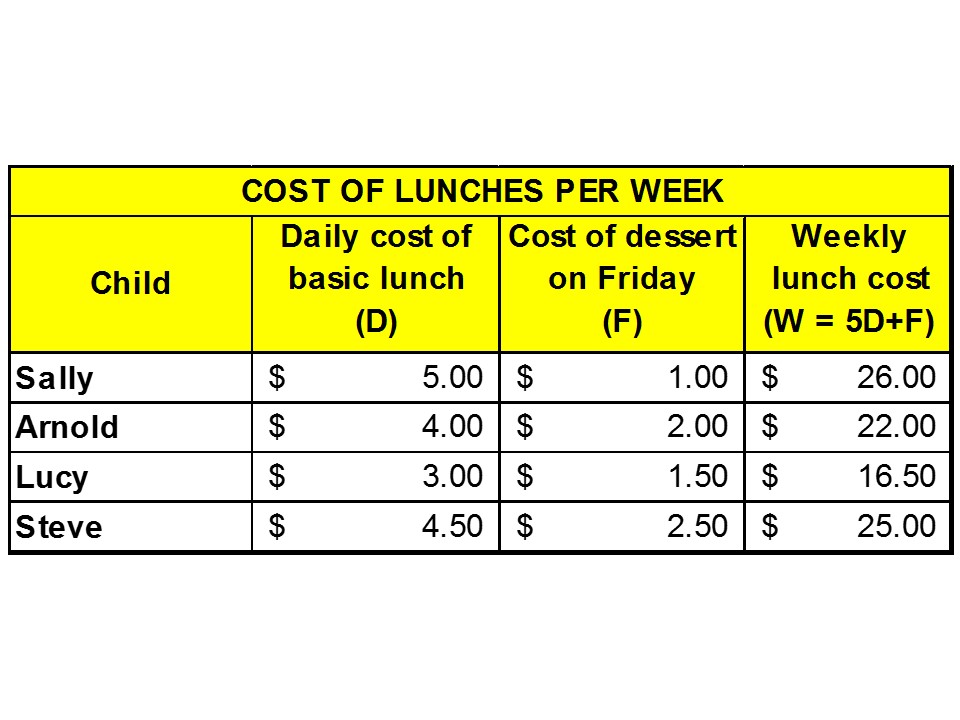“Algebra? Ooo…gross!!! I thought math was about numbers! What are all those letters doing in there?”
Deep breath. The letters are your friends. Really. Their purpose is to take a specific problem wih specific numbers and expand it to give you a WHOLE NEW WAY OF THINKING to allow you solve a whole family of similar problems. Let me illustrate by example (always a good tool).
Suppose your child spends $4 a day on lunch. The amount of money that they (i.e. you) are spending on lunch in a 5-day week is: $4 x 5 = $20. So far, so good. But that only gives you the answer to this specific problem. Useful, but not as useful as it could be.
Suppose you have another child that spends $5 per day on lunch. Per week, that amounts to $5 x 5 = $25. Useful information, but still only an answer to a different specific problem.
If this were the extent of your financial worries, then this might be all you need. However, what if you had a large family? What if you were (for some unknown reason) keeping track of the lunch budgets for all of the families on your block? What if you were in charge of keeping track of a large budget in a large organization? You would probably want a better tool to help you do it.
Enter algebra (i.e. all of those annoying letters to represent numbers. Only they’re not annoying. They’re very useful when used correctly.)
Let D represent the amount of money an individual spends on lunch each day. Let W represent the amount of money that individual spends on lunch each week. In a 5-day week, the relationship between W and D is:
W = 5 x D
This is more commonly written as:
W = 5D
When there is no arithmetic symbol between two characters in an algebraic expression, e.g. “5” and “D” in the expression above, it is understood to mean multiplication.
This allows you to calculate W for any value of D. Not just for the values of $4 and $5 used above. ANY value of D. Possibly lots of different values of D. Pretty cool.
Now let’s kick it up a notch. Let’s say you allow your child to treat themselves to a dessert every Friday, the cost of which we will represent by F for “Friday”. Now the amount spent on lunch each week is given by:
W = 5D + F
If D = $5 and F = $1, then W = $26.
If D = $4 and F = $2, then W = $22.
And so on.
An Excel spreadsheet such as the one shown below is an excellent tool for performing these kinds of calculations on long columns of such numbers. If you have ever used Excel to perform these kinds of calculations, then you have used algebra, whether you realized (or liked) it or not. And once the paralyzing fear that the word “algebra” inspires was removed as a barrier, you probably found it to be a very useful tool. Because it is.
Q.E.D. (“quod erat demonstrandum,” latin for “which had to be demonstrated”. You’ll see this again.)
